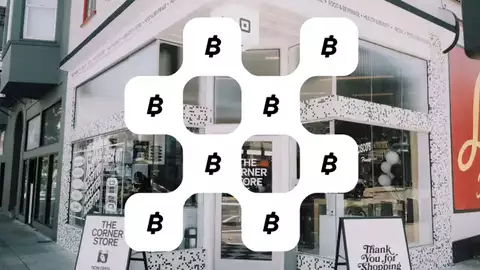
LnRouter can help you become a profitable routing node
Posted about 4 years ago by LN+
When you're running a Lightning Network Node you have the opportunity to earn SATs by routing money for other people. Routing means you receive SATs from one node on one channel and pass the funds on to another node on another channel. For this service you can charge a small fee. If you route a lot, these fees add up to considerable revenue.
Each channel you open to a node has a certain capacity and the funds are partially on your side and partially on the other node's side. In order to route effectively you need to ensure you have capacity in the directions people want to send funds.
The Lightning Network traffic is not public and the channel balances are not public either. So, it normally requires a node operator to guess which nodes need capacity and in which direction.
The LnRouter App, a paid service by the swiss developer Severin Alex Bühler aims to help node operators with the above problem, and some more.
Each channel you open to a node has a certain capacity and the funds are partially on your side and partially on the other node's side. In order to route effectively you need to ensure you have capacity in the directions people want to send funds.
The Lightning Network traffic is not public and the channel balances are not public either. So, it normally requires a node operator to guess which nodes need capacity and in which direction.
The LnRouter App, a paid service by the swiss developer Severin Alex Bühler aims to help node operators with the above problem, and some more.
Signing Up
In order to use LnRouter, first you need to sign up with your LN node by signing a message and then providing a contact email. Then, you need to sign up for a pro package which costs 16,800 SAT (at current Bitcoin prices: ~$8).
Now, you can search for medium and larger nodes (Tungsten and higher in LN+ ranking) and the app will provide you with several pieces of information as follows.
Now, you can search for medium and larger nodes (Tungsten and higher in LN+ ranking) and the app will provide you with several pieces of information as follows.
Liquidity
The exact amount in channels is not public information as mentioned above, but the LnRouter app by probing the nodes with routing transactions is able to estimate roughly the capacity of channels on each side and whether the channels are balanced or not.
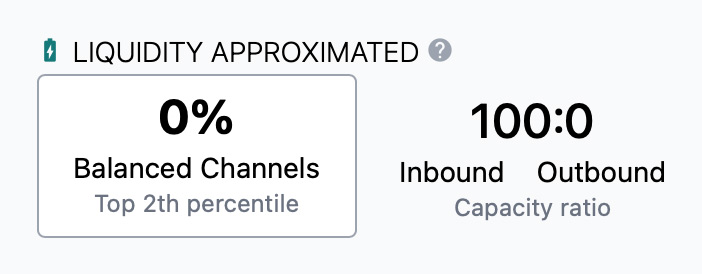

Ideally every single channel on a node would be balanced (100%), but that's not necessarily a requirement for a node to be an efficient routing node. As long as the node has capacity to receive on channels where SATs want to come through, and also has sending capacity on channels it wants to forward to, the node will work very well for forwarding. However, it's definitely not ideal if the node's capacity is all on one side on all their channels. For example, either all channels are only able to receive or only able send. An efficient routing node would have a balanced capacity ratio.
In the first example above, a large node only has many incoming channels, and virtually no outgoing capacity. This means the node is not effective for routing purposes (but it's very effective for receiving payments if it's a merchant). If you're expecting to route or even just send SATs through this node you will be out of luck. It's better to avoid connecting to such a node, unless you're planning to pay invoices to this node.
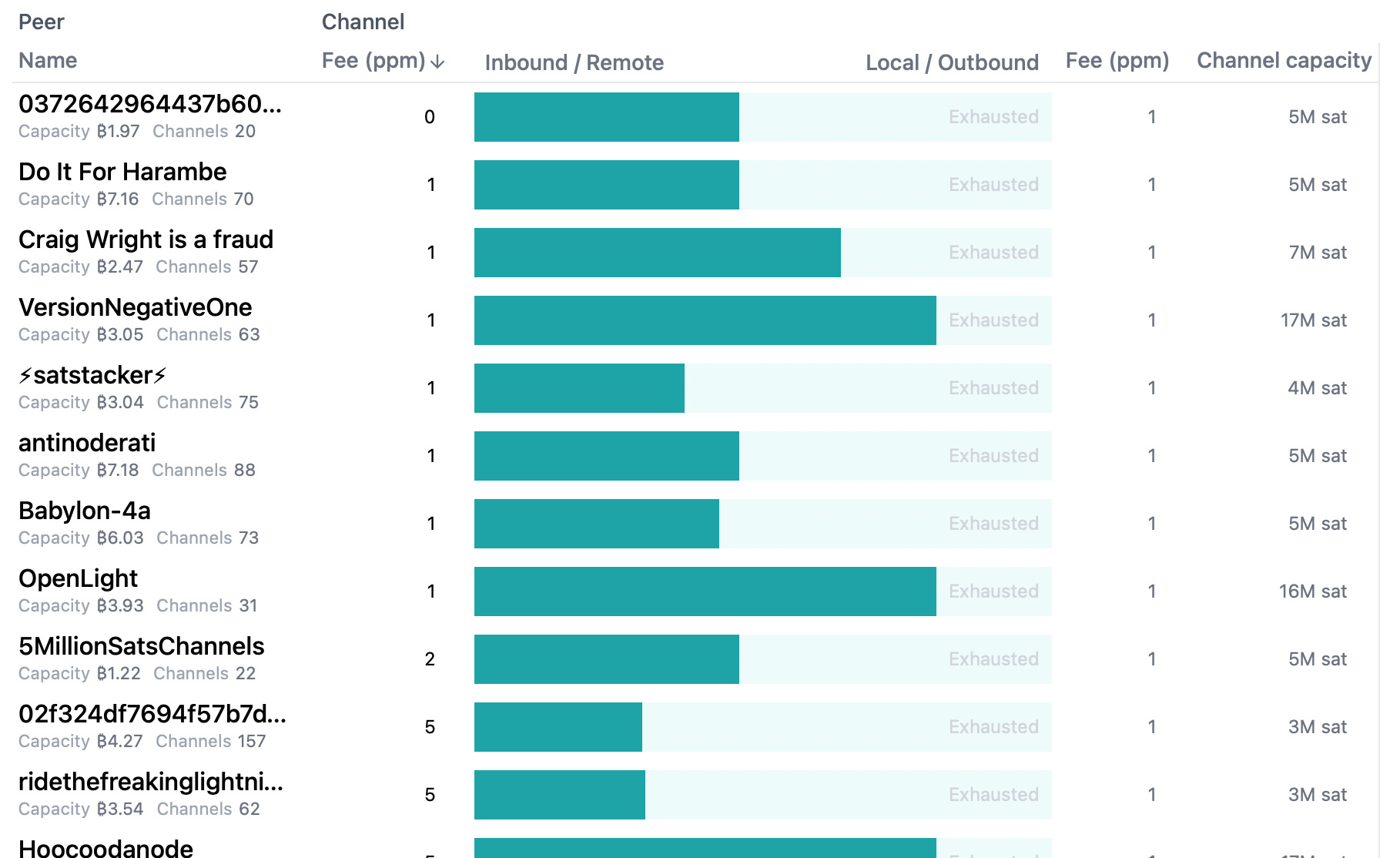
As you can see on the image above, LnRouter gives a per channel breakdown of estimated capacity. You can have a rough idea about what's happening on a given node in terms of channel balances, and you can see if your node can complement the given node.


Ideally every single channel on a node would be balanced (100%), but that's not necessarily a requirement for a node to be an efficient routing node. As long as the node has capacity to receive on channels where SATs want to come through, and also has sending capacity on channels it wants to forward to, the node will work very well for forwarding. However, it's definitely not ideal if the node's capacity is all on one side on all their channels. For example, either all channels are only able to receive or only able send. An efficient routing node would have a balanced capacity ratio.
In the first example above, a large node only has many incoming channels, and virtually no outgoing capacity. This means the node is not effective for routing purposes (but it's very effective for receiving payments if it's a merchant). If you're expecting to route or even just send SATs through this node you will be out of luck. It's better to avoid connecting to such a node, unless you're planning to pay invoices to this node.

As you can see on the image above, LnRouter gives a per channel breakdown of estimated capacity. You can have a rough idea about what's happening on a given node in terms of channel balances, and you can see if your node can complement the given node.
Speed and Connectedness
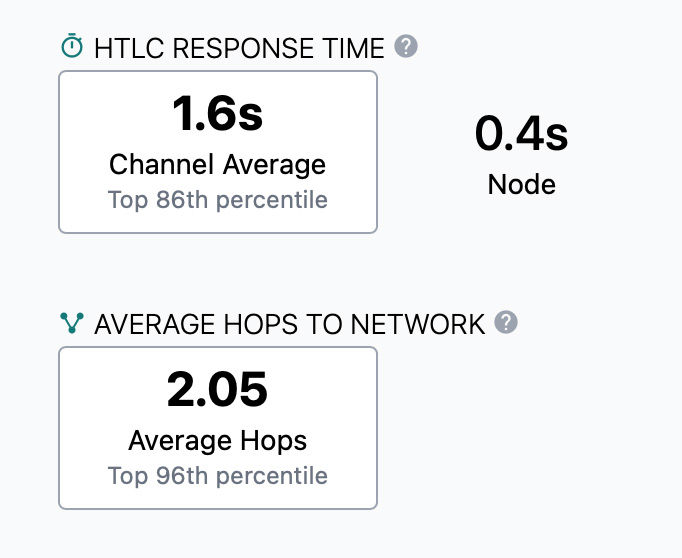
Besides liquidity, it's important to know the reaction speed of a node and how well connected it is to the rest of the network through its channels. The faster and more connected the node, the quicker the payments go through it, and thus the more likely it will be chosen by the payment routing algorithms.
Routing Score
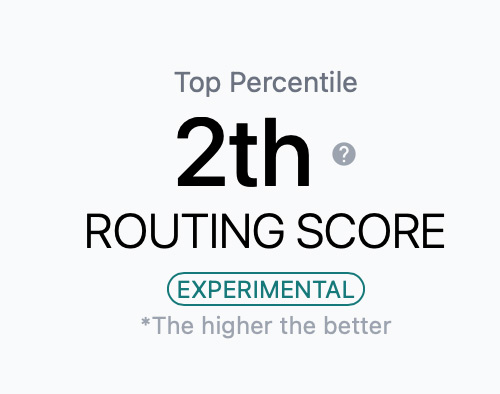
The routing score is an aggregation of the data explained above and gives you a quick understanding how good the node is in terms of routing.
Conclusion
So, how do you make sense of all this data as a node operator, and how to decide what node to connect to? There are many strategies, but here are three possible ideas:
- Find nodes that have a lot of local capacity and not enough incoming capacity, and open a channel to them. Any node that receives a lot of SATs and doesn't send a lot out will have this property and problem you can relieve.
- Find nodes that have lots of incoming capacity but no local capacity. Establish a channel with such a node, and ensure to push capacity to their side, so you have an empty channel from your side. This can be achieved by asking them to open to you, or by rebalancing which could be difficult if the node is very unbalanced.
- Look for well balanced and fast nodes. Connecting to them will increase the chances that the channels will be well managed from their side without you needing to do anything. And since the node is likely routing funds regularly, you will receive some of that traffic too.
Whenever you are opening channels, it's best if you open to a node within a swap right here on LN+, so your own node doesn't become unbalanced. However, that's no always possible, so you may need to find intermediate nodes to open to achieve your rebalancing needs.
0 Comments
Please login to post comments.

Lightning Network Node
LightningNetwork.Plus
Rank: 6 / Tungsten
Capacity: 55,000,000 SAT
Channels: 8
Latest news
Channel Rebalancing 101: Practical Strategies for Better Routing
Posted about 21 hours ago
Square Launches Lightning-Powered Bitcoin Payments: Zero Fees Until 2027
Posted about 1 month ago
Introducing Telegram notifications
Posted about 2 months ago
Introducing Nostr DM notifications
Posted 2 months ago


